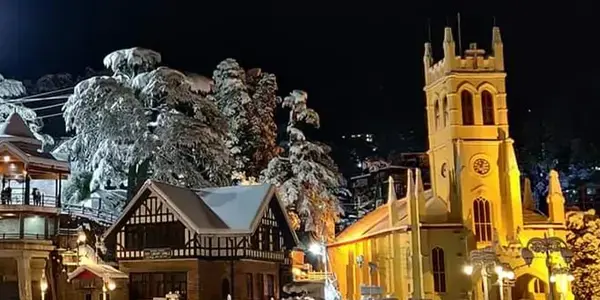

.webp)
Toy Train Shimla was constructed between 1898 and 1903 to connect Shimla, the summer capital, to the plains. Winding through rugged Himalayan terrain, the 96.6 km track rises from 656 m at Kalka to 2,075 m at Shimla using 102 tunnels, 864 bridges, and 919 curves. It was engineering marvel of its time under Herbert Harington’s leadership. Originally powered by steam engines from Sharp-Stewart, diesels were introduced in the 1950s. Declared a UNESCO World Heritage Site in 2008, the line preserves its colonial charm with vintage carriages and slow-paced journeys through pine forests and mountain valleys. Heritage steam services were reintroduced in recent years, offering nostalgic trav ...
.webp)
Packages Of Shimla
Classic hill-station charm with scenic views and cosy stays.

Places To Visit In Shimla
Top places to visit in Shimla, beautifully curated.
.webp)
Images Of Shimla
Discover Shimla’s colonial charm, hills and nature through images
Packages Of Shimla
Places To Visit In Shimla
Images Of Shimla
Book 120 days ahead—window seats are best
Daytime rides offer best light
No pantry—bring snacks and water
Stop at Barog for viewpoint & chai vendor
Wear warm layers—high-altitude chill applies
Check steam schedule—only runs seasonally
Soft bags are easier in vintage coaches
Listen to the old engine whistles—it’s all part of charm
Popular Foods Nearby:
Hot cutting chai and samosas at Barog station
Steaming momos and hot chocolate in Solan
Summer & autumn
Toy Train Shimla was constructed between 1898 and 1903 to connect Shimla, the summer capital, to the plains. Winding through rugged Himalayan terrain, the 96.6 km track rises from 656 m at Kalka to 2,075 m at Shimla using 102 tunnels, 864 bridges, and 919 curves. It was engineering marvel of its time under Herbert Harington’s leadership. Originally powered by steam engines from Sharp-Stewart, diesels were introduced in the 1950s. Declared a UNESCO World Heritage Site in 2008, the line preserves its colonial charm with vintage carriages and slow-paced journeys through pine forests and mountain valleys. Heritage steam services were reintroduced in recent years, offering nostalgic travel experiences. Notable stops like Barog and Solan are popular for their viewpoints and local tea vendors. Today, the train remains a symbol of mountain railway heritage, weaving history, scenic beauty, and cultural pride into a single journey.
Facts:
Built 1898–1903; climbs 1,419 m total ascent
Includes 102 tunnels and 864 bridges
UNESCO World Heritage since 2008
Steam and diesel locomotives in use
Longest tunnel originally at Barog (1,143 m)
Hilly terrain is a dynamic landscape characterized by rolling or steep slopes, varying elevations, and a mix of hills, ridges, valleys, and plateaus. These features are the result of geological processes such as tectonic movements, erosion, and weathering over time.